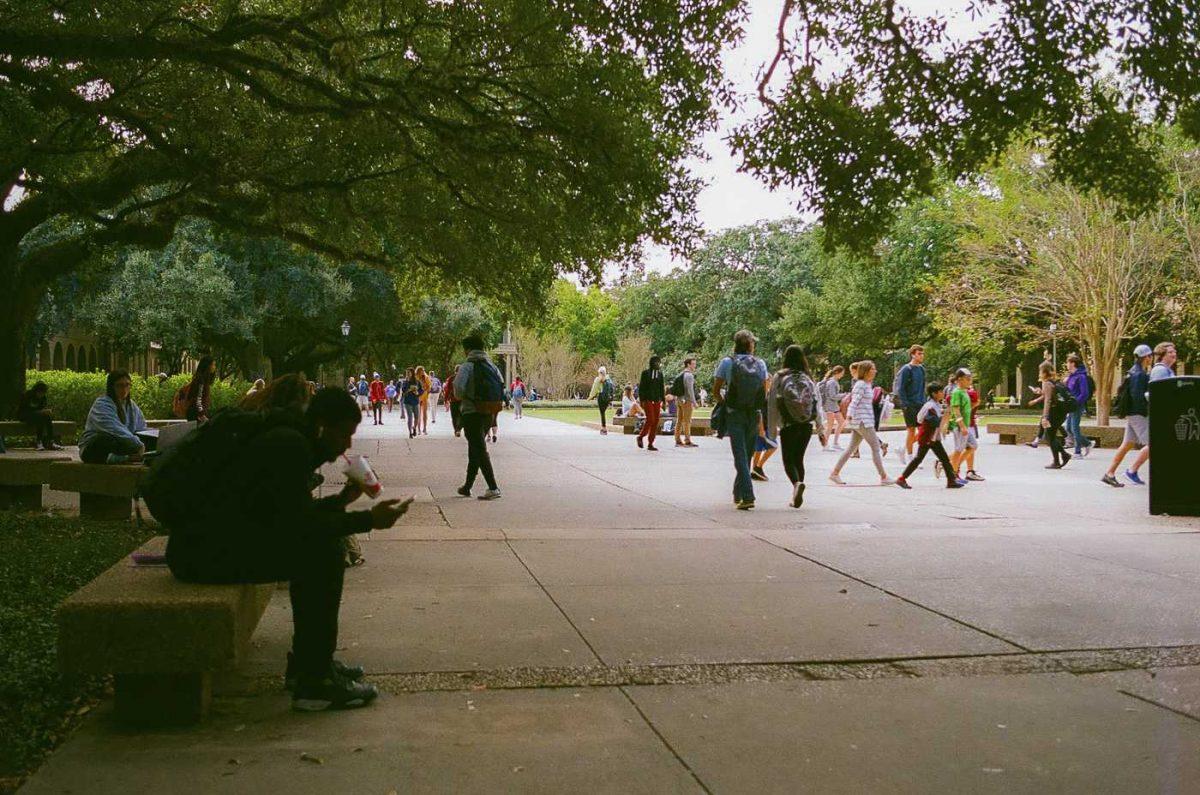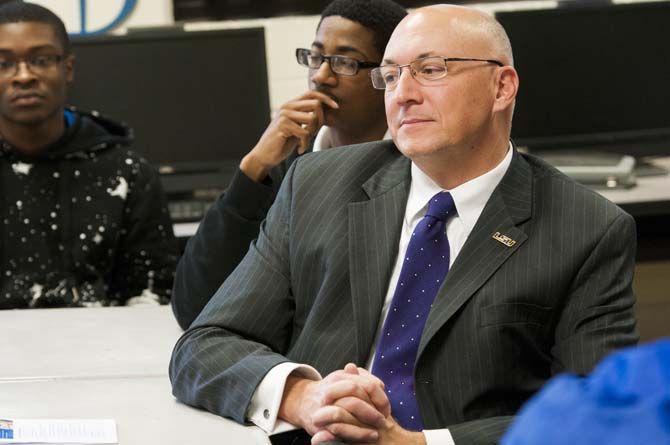This fall, LSU broke records for enrollment, retention and graduation rates and brought in the largest and most diverse freshmen class in University history.
This year’s 6,690 freshmen class is the largest class on record, surpassing last year’s 6,126 freshmen. Diversity of the freshman class is also at an all time high.
Students who identify as either American Indian, Black, Asian, Native Hawaiian, Hispanic, and two or more races make up more than 30% of the total freshman class this year.
Overall enrollment at LSU is at an all-time high of 34,290 students, and the University also saw high marks for retention and graduation rates.
LSU 2020 enrollment records:
-
Total enrollment of 34,290
-
Freshman enrollment of 6,690
-
Black freshman enrollment of 16.8 percent
-
Hispanic freshman enrollment of 9.1 percent
-
GPA for the freshman class of 3.45
-
Roger Hadfield Ogden Honors College exceeds 800 new freshman for the first time ever
-
Ogden Honors College freshman average ACT of 32 and GPA of 3.81
-
First-to-second-year retention of 85.8 percent
-
First-to-third-year retention of 74.8 percent
“Setting new records for enrollment, retention and graduation rates would be an exceptional achievement during any academic year, but it’s an incredible accomplishment during this year of a pandemic,” said LSU Interim President Thomas Galligan.
Despite the uncertainty and economic downturn caused by the coronavirus pandemic, undergraduate enrollment at Louisiana universities increased by 1.3% in the fall of 2020, according to data collected by National Student Clearinghouse.
Louisiana’s increase in undergraduate enrollment goes against the national average, which is 2.5% below last year’s levels.
Although many institutions predicted their fall enrollment numbers would be rough, Vice President Stacia Haynie said LSU’s upper administration had reasons to believe otherwise.
“As we rolled into March, we had every indication to be optimistic,” Haynie said. “The concern then becomes that our typical sorts of events that help us to seal that deal and ensure those students come to LSU—we were not able to have those.”
Haynie said LSU’s virtual recruitment tactics in the spring and summer helped engage more students than in previous years. The student turnout for SPIN, LSU’s spring invitational program, indicated that more students were thinking about coming to LSU.
“I think normally we have a little over 1000 students who engage; we had over 2000,” Haynie said. “Why? Because students in California or New Jersey or Texas or Florida didn’t have to take off high school to come to campus to be a part of SPIN. We did it virtually, so we were able to engage many many more students, and I think that actually helped us.
After the abrupt switch to online classes in March, LSU hosted 52 different virtual events to engage potential students, according to Haynie.
“We didn’t take for granted that those numbers would hold—we said ‘how do we ensure that this class lands,’” Haynie said. “That’s where I think the entire campus community really stepped up to collectively ensure that those students decided LSU was in fact where they needed to come and find their home.”
LSU set records in both first-to-second and first-to-third year undergraduate retention, a goal the upper administration was less sure they would meet after viewing their retention numbers in the spring.
“We gave a 15% break on costs for the summer so that anybody who had to withdraw from a class could catch up or get ahead,” Galligan said. “So again it was just a heck of a lot of hard work.”
“We were really being proactive in engaging with our students,” Haynie said. “That intrusive advising is really critical–both in engaging those incoming students but also ensuring that once you’re here we want you to stay with us.”
Some students voiced concerns about the University not being able to meet all students’ needs as enrollment increases; others said taking in so many students right now doesn’t make sense.
Galligan said the University has a plan to address parking and that LSU has a limit on the number of students who can be on campus in a given year.
“There is a physical limit on the number of students that we can have on campus without significant building — I think it’s 35,000, and the 34,000 we have include 1900 students who are online, so we’re not yet at the 35,000,” Galligan said.
Galligan and Haynie said the real challenge of having more students on campus is hiring more faculty.
“While there are physical issues with growth, I think the huge issue with the student body growing is that we need to be able to hire more faculty, we need to be able to hire more staff, we need to be able to build into our financial plan raises for those faculty and staff so they stay here,” Haynie said. “So I think the personnel issues are more significant than the physical issues. We can’t keep asking the same people to do the great work they’re doing for more students.”
Galligan said hiring more faculty of color to represent LSU’s increasingly diverse student body was another challenge.
“That was the number one concern of the students that we’ve talked to–the black student leaders and other student leaders and one of the number one concerns of the faculty and staff diversity task force,” Galligan said.
LSU’s Office of Diversity, Equity and Inclusion released a roadmap to diversity and inclusion in April, outlining various ways to increase diversity and inclusion at the University. The roadmap’s faculty section suggests initiatives and methods for better recruitment and retention of faculty of color at LSU.
Whereas 30% of LSU’s incoming freshman class come from underrepresented groups, faculty is made up of only 8.2%, according to Haynie.
Haynie and Galligan agreed that LSU students deserve credit for the University’s accomplishments this semester.
“The president and I have both been really grateful to the student body because one of the reasons we’re having success in enrollment is because students do find a place here where they can be successful and that means you have peers who are integrating you and helping you to find your space and to feel appreciated, to feel that you matter and you belong,” Haynie said.






